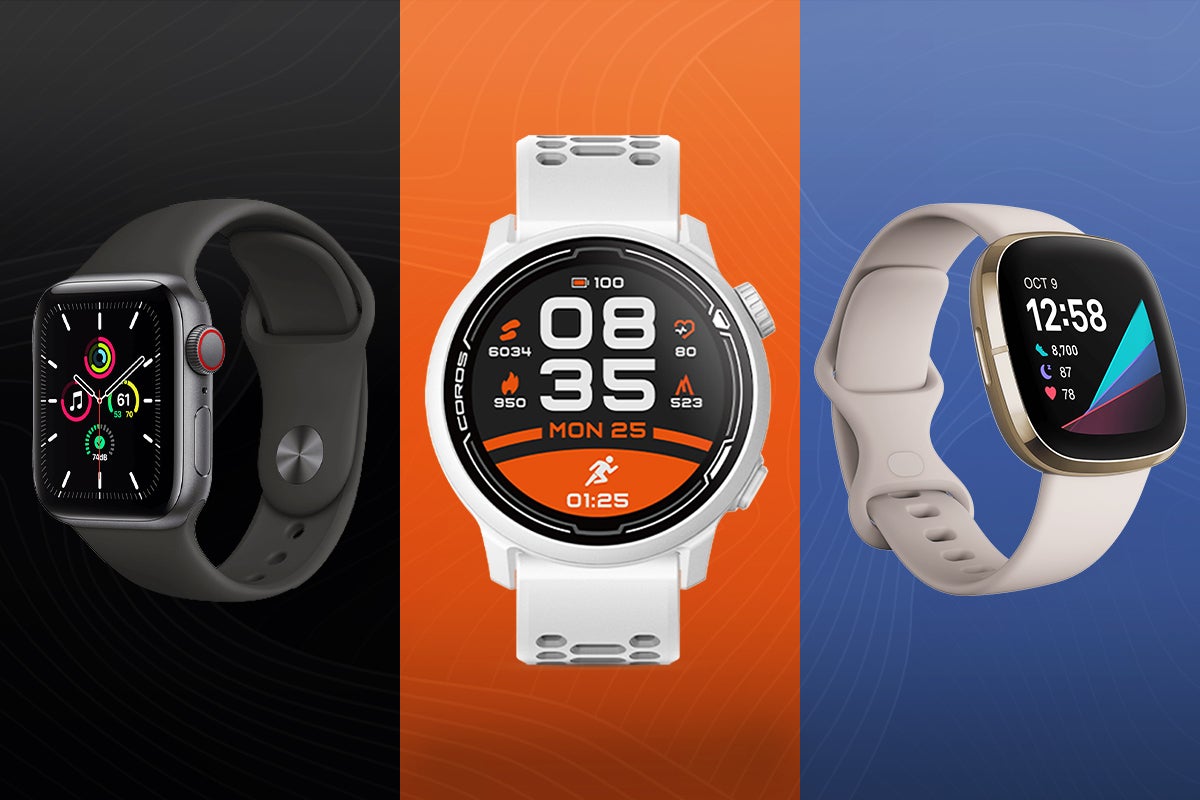Garmin Venu 2 Plus Review
The Garmin Venu 2 Plus is a Venu 2 with a trimmer frame and some new smartwatch-style features


Verdict
The Garmin Venu 2 Plus is a Venu 2 with a slightly trimmer frame and some new smartwatch-style features. None of which are essential, but may be enough to sway you over to team Garmin if you’re deciding between a smartwatch and a fitness watch. The latter is still the key appeal here, thanks to the Venu 2 Plus’s great spread of tracking modes, long battery life and largely reliable metrics.
Pros
- Tidier, slicker design than the original Venu 2
- Excellent fitness tracking depth and versatility
- Can take/make calls
Cons
- Speaker is quiet and thin
- No significant improvements to actual fitness tracking skills
- Digital assistant support is limited and clunky
Availability
- UKRRP: £399.99
Key Features
- Elevate 4.0The Venu 2 Plus has the same heart rate array as the top Garmin watches, as introduced in the Venu 2
- Digital assistant supportGarmin adds a microphone and speaker to the Venu 2 Plus, enabling support for digital assistants including Siri, Google Assistant and Samsung Bixby.
- Offline musicLike the Venu 2 and other top Garmin watches, you can save music to the watch, including from Spotify, Deezer and Amazon Music
Introduction
The Garmin Venu 2 Plus is a refreshed version of 2021’s Venu 2. It’s a feature-packed fitness watch that feels far closer to a smartwatch than most other Garmin bands.
It arrived around eight months after the original, a clear sign that this isn’t intended to be a full generation refresh. An integrated speaker and microphone, along with a slight but important change to the outer hardware make the Venu 2 Plus trimmer and better-looking over the original.
Functional additions aren’t exactly world-changing. You can take calls from the wrist: nice but niche. You can play music directly on the watch, which isn’t that appealing when the speaker is thin and quiet. A Garmin Venu 2 Plus lets you interact with your phone’s digital assistant, but the experience is clumsier than it is through Wear OS or Apple watch. No surprise there, then.
The Garmin Venu 2 Plus speaker can play alerts when notifications arrive to your phone, adding another element of smartwatch flavour. While I wouldn’t recommend many Venu 2 owners upgrade to the Venu 2 Plus, you still get all the excellent benefits of the original. And this watch seems to cement the Venu series as the testing bed for new Garmin features. While some are a little limited at present, the new additions still have some value once you get to grips with their limitations.
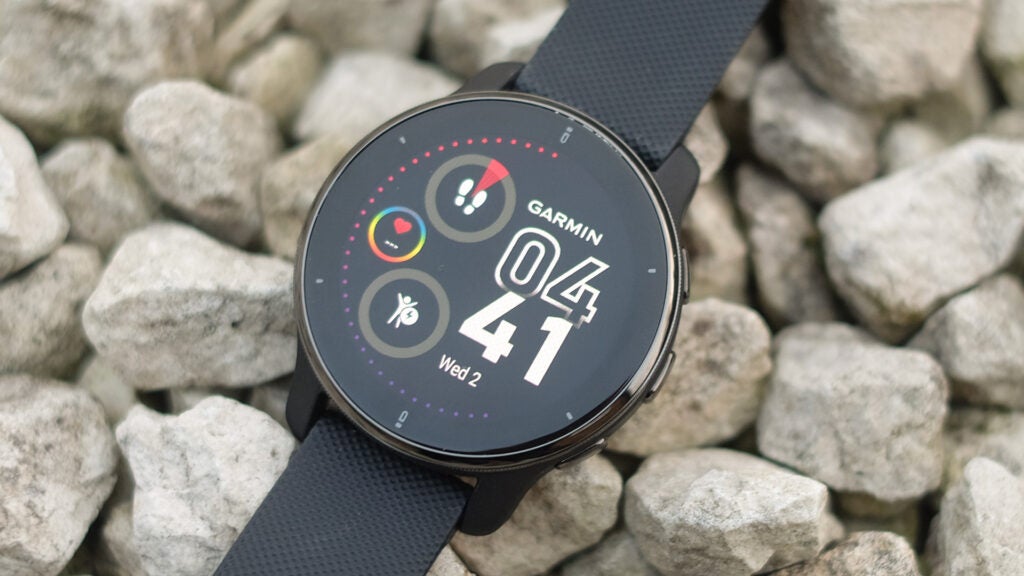
Design and Screen
- Excellent overall look and feel
- Higher screen-to-surface ratio than the Venu 2
- A very comfortable watch to wear
It probably sounds like I’m not too enthused by the Garmin Venu 2 Plus so far, but Garmin has actually done a great job with the design changes here. Almost every time Garmin makes a more mainstream fitness tracker, it looks a little clunkier or more awkward than models from brands such as Fitbit, Apple and Samsung.
The Venu 2 Plus removes those traces from the Venu 2 blueprint. A knurled steel rim is replaced by a significantly thinner, smoother one. The Plus has the same 1.3-inch OLED screen as the larger 45mm Venu 2, but this new shape delivers a higher screen-to-surface ratio and looks more like a style-led smartwatch.
You could argue that it also looks more anonymous as a result – but, to me, those sound like the words of a reviewer who has just worn too many different smartwatches over the past 12 months. For a Garmin, the Venu 2 Plus looks slick.
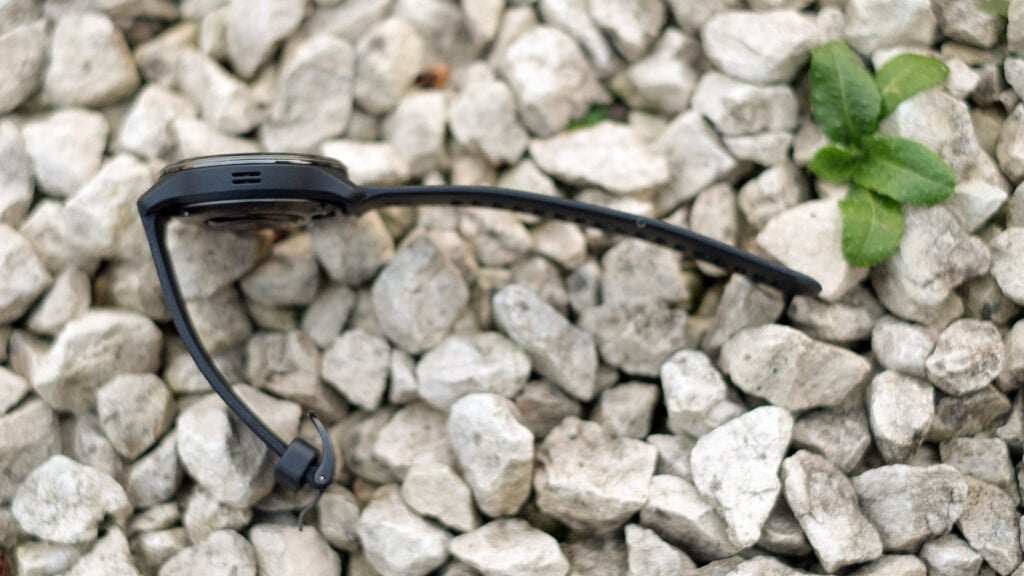
The steel ring around the screen has a PVD, or Physical Vapour Deposition, coating. This involves layering an ultra-thin film of vaporised metal onto the surface of the bezel. It apparently improves hardness and scratch-resistance, but my main take away is that it looks good. The steel ring has a glossy but smoky finish, tempering the dazzle of smooth metal well.
This entire Venu series isn’t as rugged as other Garmins, because there’s no protective lip around the screen to protect the display glass. It’s Gorilla Glass 3 here, just like the Venu 2.
The Plus’s back plate is stainless steel, with the wall of the watch body fibre-reinforced plastic. These are Garmin staples – but low bulk and weight are not.
I find the Venu 2 Plus a more comfortable watch to wear all day, and at night, than the Fenix 7 as a result. This may sound relatively unimportant, but it brings benefits in a number of ways. A lighter watch is less liable to move around on your wrist when you head out on a run, which would likely impact your heart rate readings. Plus, you’re more likely to want to wear the Venu for sleep tracking, too.
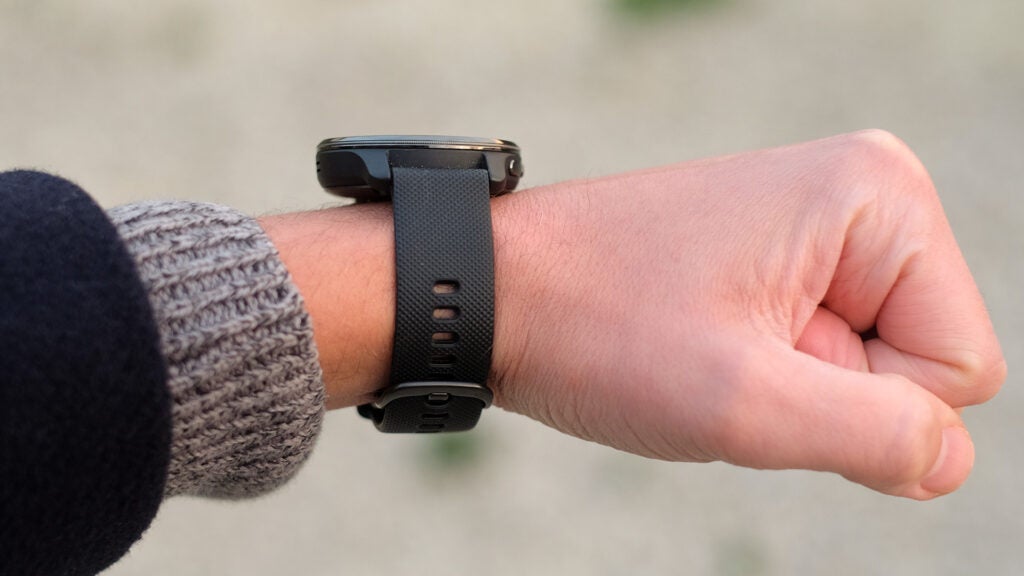
The screen style is the obvious outward draw, though. It’s a 1.3-inch 416 x 416 pixel OLED screen, which looks far brighter and more colourful than the memory-in-pixel LCDs of Garmin’s classic watches. The Venu 2 Plus display image also appears closer to the surface and, in most lighting, blends seamlessly with the black of the screen surround.
This is a smoother, glossier kind of Garmin watch. However, there are several good reasons Garmin continues to use the duller MIP displays in the Fenix, Instinct and Forerunner watches.
Those screens thrive off ambient light, only becoming clearer on sunny days outdoors. The Garmin Venu 2 Plus’s OLED screen has to compete with ambient light, making it use a relatively large amount of charge outdoors.
Always-on displays, where the watch face remains on the screen face all the time, is a “free” feature of Garmin’s MIP display watches. While it is available in the Garmin Venu 2 Plus, there’s a huge cost in terms of battery life, so you need to turn it on manually.
Garmin says the watch can last up to nine days in “smartwatch” mode, meaning you don’t use it for active GPS activities. Based on my testing, this drops to four days with the screen always-on and doing little else with the Garmin Venu 2 Plus. Track a workout or two and use it to regularly check incoming notifications, and you might see this drop to three days.
It’s still far better than an Apple Watch, but you lose the ultra-long battery life that consistently makes Garmin devices so appealing. As ever, Garmin offers several ways to tweak the Venu 2 Plus’s behaviour. There are separate “always on” modes for in and out of exercise tracking. And if you find the battery life reduction too extensive, then there are three levels for the screen time-out, and two levels for the sensitivity with which it reacts to the wrist flicks that tell the Venu to light up the screen. The default is “high”. I don’t recommend switching to “low”.
Garmin does seem to have made some battery life optimisations in the Venu 2 Plus. While its “smartwatch” battery life is slightly lower than the Venu 2’s, at nine days compared to 11, GPS use actually increases from 22 hours to 24 hours. A little over an hour of GPS-tracked running consumed 5% of the charge level, which is close enough to the Garmin claim considering drain will be affected by how often you check the on-screen stats.
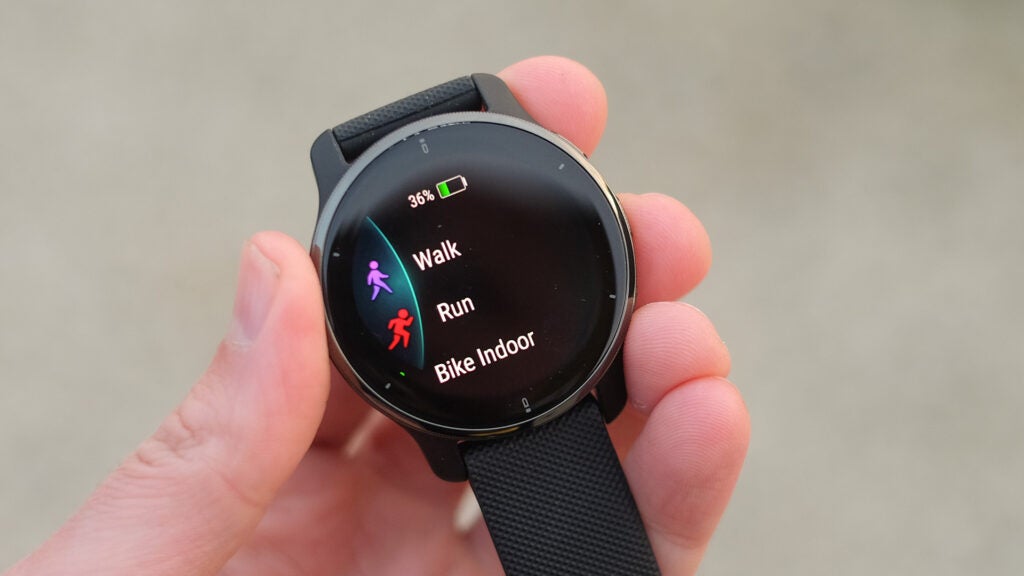
Features and Tracking
- Phone calls stand out as a new feature
- There’s also now virtual assistant support
- All the usualy excellent Garmin tracking skills
Let’s now move onto the Venu 2 Plus’s new features, in case you’re reading this with good knowledge of what the original Venu 2 can do. It gains a speaker and microphone, laid on each side of the watch.
Phone calls are perhaps the most eye-catching new feature here. You can take calls right from your wrist, and even make them on the Venu 2 Plus itself using either a tiny dial pad or a contacts book your setup in the Garmin Connect app on your phone.
This watch doesn’t have its SIM card, so it functions a little like an enhanced Bluetooth headset; your phone needs to be nearby. Personally, I’d much rather use such a headset than try to take a call using a speaker that’s much quieter than the unit of any phone. I also couldn’t get it to work with a WhatsApp call, which I use far more than traditional phone calls these days.
The Garmin Venu 2 Plus’s mic/speaker combo is also used to interact with your phone’s virtual assistant. However, it’s clunky in use. Long-press the middle button and your phone “wakes up”, acting as if you pressed a physical assistant button on the phone itself. The watch mic then takes on the job of the phone’s mic, and the same for the watch speaker.
This creates an issue: the assistant isn’t aware that it’s running (sort of) on a watch. Ask it anything remotely complicated and you’ll hear the usual “I found these results” through the Venu speaker, with no visual feedback on the screen.
This doesn’t mean the Venu 2 Plus’s assistant support is useless, but it will likely appear so until you work out which commands do work just fine. You can set alarms and reminders, or ask if it will rain tomorrow – but that presses at the limits.
Linking up with the assistant takes up to two seconds each time, and the assistant screen will pop up in your pocket, which may result in unwanted screen presses. Don’t expect too much from the Venu 2 Plus’s assistant support, although it did connect with Alexa and Google Assistant during testing, and also supports Siri and Samsung Bixby.

Music support is another key job for the speaker. The software behind music support is the same as ever. You can store tracks on the Venu 2 Plus itself, dragging and dropping them onto the internal storage. There are also apps for Spotify, Deezer and Amazon Music, which let you download playlists, podcasts and albums for offline playback. Spotify works fairly well and trims down library navigation to avoid headaches.
The change in the Venu 2 Plus is that you don’t have to connect wireless headphones to play tracks; you can use the watch speaker. But would you want to? It’s fairly quiet and thin-sounding – I don’t plan on using this feature much post-review.
A speaker also enables the watch to “ding” when notifications come in via your phone, which gives the Venu 2 Plus more of a smartwatch feel. However, I imagine many will turn these off, since a subtle vibrate alert will be less distracting.
While these added features may be the supposed highlights of the Plus’s changes, I think the design tweaks are actually stronger. It makes me glad the Venu 2 Plus is more of a half-generational upgrade than a full-series refresh. However, these smartwatch features were always going to be a struggle for Garmin. Its watches run on proprietary software, whose roots aren’t particularly smart.
Core fitness features are much the same as they are in the Venu 2. This means you don’t get on-watch maps, or some of the metrics seen in top-end Garmins; but there’s more than enough to provide excellent, versatile fitness tracking for most people.
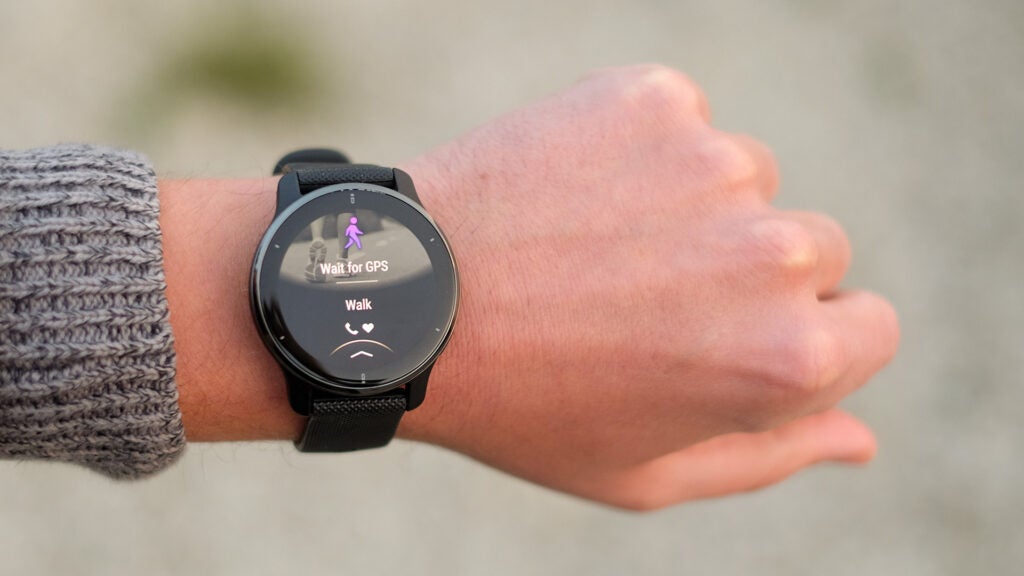
Want to know the missing bits? VO2 Max isn’t a core part of the watch’s stats. You can find the figure if you go to the Performance part of the Garmin Connect app on your phone, but it’s probably deemed too “hardcore” for this range. There’s no Performance Condition or Training Status, which are useful tools for appraising your workout-to-workout performance and whether your routine is too hard, or not tough enough.
The Garmin Venu 2 Plus’s stats are trimmed back to suit people who don’t live via their exercise routine. To judge whether you might be run down, you could use Body Battery instead. This is a slightly softer health metric that pits your stress and exercise against how well you sleep, maintaining a score out of 100 – potentially handy, if you wear the watch all the time. Intensity Minutes is a handy stat for those who work out regularly, too. It collates how long you spend in elevated heart rate zones, offering a less intensely analysed alternative to the metrics of the top Fenix and Forerunner bands.
The sensor hardware is very similar to the top-end Garmins, however. We get an Elevate 4.0 heart rate array, which was introduced in the Venu 2 and has been brought over to the new Fenix 7 series. There’s full GPS, of course, and a barometric altimeter.
Despite leaning a little closer to watches such as the Apple Watch 7 in some respects, there’s no ECG sensor here. I don’t think this would add all that much to the Garmin Venu 2 Plus, though, it being primarily a fitness watch rather than a “health” watch.
Like last time around, the depth of the activity modes is a real stand-out. It has become trendy for fitness trackers to offer 100+ modes, most of which are extremely thin copy-and-paste jobs of a totally vanilla mode that does little more than record time spent and heart rate. The Venu 2 Plus has a smaller (but still large) range of modes, many of which are excellent.
The Garmin Venu 2 Plus has a Golf mode that hooks up to a massive library of courses to display your distance from the hole. Its Indoor Cycling mode can connect to cadence and speed sensors for proper stat tracking. This includes smart turbo trainers – although, unlike the Fenix series, it won’t control a trainer’s resistance/incline, which a Fenix 7 can do.

There are also lots of semi-guided workouts, some complete with on-screen animated guides. You’ll find these for HIIT, Strength, Yoga and more, and there are segmented running workouts too. Garmin offers pre-defined workouts, but you can create your own in Garmin Connect as well. This is the kind of depth you don’t get with any old fitness tracker, and is typical of the Garmin effect – where the deeper you dig, the more you find. I’m not sure any Venu 2 Plus owner will make use of everything it can do.
The Venu series put a friendlier face on the potentially intimidating encyclopaedia that is the Garmin fitness platform, and I think it does a great job. Flick up from the watch face and you’ll just see a bunch of glance widgets that show the typical stats of an everyday fitness tracker. Plus a few Garmin extras, of course. Here’s the list:
- Steps
- Floors Climbed
- Intensity Minutes
- Calories
- Hydration
- Heart Rate
- Body Battery
- Stress
- Respiration
- Pulse Ox (SpO2)
- Sleep
- Schedule
- Notifications
- Weather
- Health Snapshot
You can order these as you desire, remove those you don’t want, and add a stack of others. Unusual highlights include Garmin Coach, which offers running and cycling training plans spanning many weeks, presented by a professional trainer. It’s no Apple Fitness Plus, but there’s no subscription fee. And there’s the Lights widget, which controls Garmin Varia bike lights remotely.
There’s just so much stuff to find if you go looking for it.
Sleep tracking is decent, too, but mostly for how the data is presented rather than its forensic accuracy. Following each night you get a sleep score out of 100, a little graph showing sleep stages, a one-sentence written summary, plus your time spent sleeping. It’s dead easy to take on-board, and the main points take up a single screen. I find the Venu 2 Plus tends to underestimate how long it takes you to get back to sleep after waking up at 3am – so it may overestimate the time spent sleeping on bad nights. But I still find sleep tracking unusually enjoyable to use, and it gives a fair reading on sleep quality as long as you are an okay sleeper.
The quality or accuracy of the Garmin Venu 2 Plus’s other recorded stats seems similar to that of the Fenix 7. Its heart rate readings are largely accurate, whether we’re talking about passive all-day tracking or results during exercise.

Heart rate readings aren’t too high at the start of an activity, an issue I had with some older Forerunner watches. The Garmin Venu 2 Plus reacts to changes in exertion fairly quickly, and the figures tracked fairly closely with my HR chest strap.
The way in which Garmin presents run routes in Garmin Connect – as a fairly thick line – hides most minor GPS accuracy wobbles (as in most trackers). However, its connection was rock-solid throughout testing, and it was very quick to triangulate position at the start of workouts.
I wouldn’t advise that you rely on its Pulse Ox readings, which measure blood oxygenation. I’ve found initial readings to be too low, with the Venu 2 Plus typically showing a higher reading on a second attempt, or when using the longer Health Snapshot feature. This is a two-minute session that looks at multiple metrics including stress and heart rate variability.
I also find the altimeter to be way off the mark. Each day the Garmin Venu 2 Plus seems to record far too high a number of floors climbed. This isn’t something I’ve encountered in previous Garmin watches; I think it may be a software bug.
There are a few little bugs in the Garmin Venu 2 Plus at the time of review. This watch makes decent use of achievements and personal records, which show up with colourful animations when you complete a workout that represents a new benchmark in, say, distance or speed. Following one of these, the screen went completely black and refused to head back to the watch face, requiring a hard reset. New software, new problems; but these aren’t a reason to avoid the watch. They may well be fixed by the time you get hold of a Venu 2 Plus, and have honestly barely tarnished a highly enjoyable few weeks using the watch.
Latest deals
Should you buy it?
Great design and excellent skills: The Venu 2 Plus blends the appearance and feel of a smartwatch with the fitness tracking depth of a classic Garmin runner’s watch – it’s a compelling combo.
Minor upgrade: Despite fresh new smart features, such as digital assistant support, this isn’t a direct rival to an Apple Watch, and those who already own a Venu 2 probably shouldn’t upgrade.
Final Thoughts
The Garmin Venu 2 Plus is just as good a sports watch as the Venu 2, and includes a handful of new smart features thanks to its built-in speaker and microphone. These features don’t make it a better fitness watch, and some of them are a little rudimentary compared to those of, for example, an Apple Watch SE.
However, this is to be expected when Garmin has to hook into elements of platforms it doesn’t own or control, such as digital assistants.
If you see the original Venu selling for significantly less, it may be the better buy. But the Venu 2 Plus is a better-looking, slightly smaller watch, and the tidier frame doesn’t have a dramatic effect on battery life in real-world use.
How we test
We thoroughly test every smartwatch we review. We use industry standard testing to compare features properly and we use the watch as our main device over the review period. We’ll always tell you what we find and we never, ever, accept money to review a product.
Worn as our main wearabpe during the testing period
Heart rate data compared against dedicated heart rate devices
Side-by-side comparison with our best scoring smartwatches
FAQs
It comes with 5ATM water-resistance just like the original Venu 2, despite the complicating factors of an external speaker and microphone.
There’s no wireless charging here, just a classic sturdy 4-pin port on the back of the watch, used to connect to a cable bundled with numerous Garmin watches.
The watch doesn’t have on-watch maps, but the navigation mode does let you save rudimentary routes to the Venu 2 Plus.



